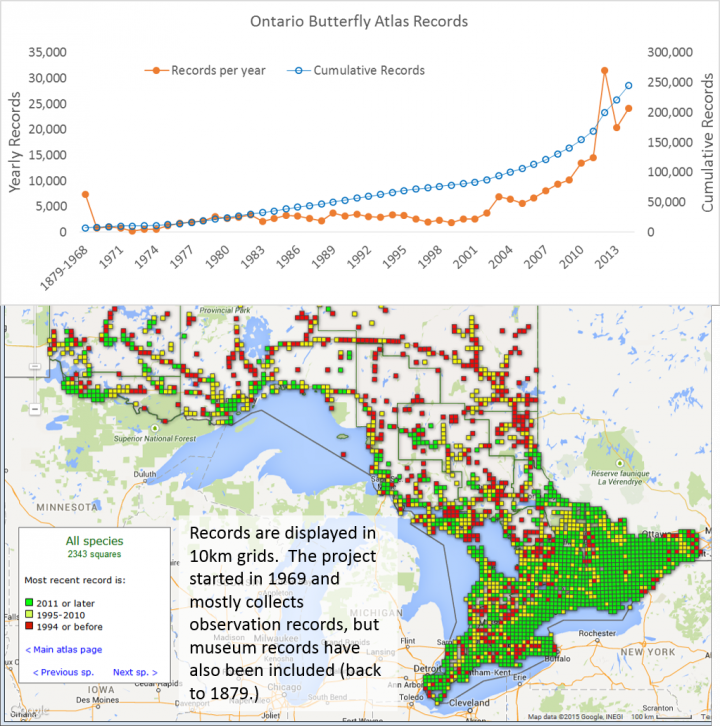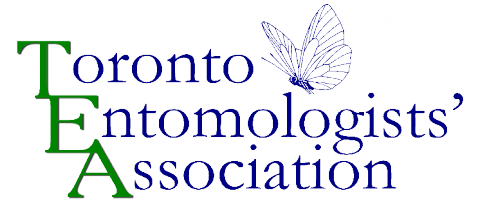This program represents the longest-running effort to organize citizen scientist (amateur naturalist) collection of distribution data for butterflies in North America. This project is an effort to collect data and display presence records for all butterflies in the Ontario area separated by 10km squares for the year the observation was recorded (1994 and before, 2011 or after, in between). Visitors can sort records by the year of the most recent record or the year of the first record. Most records are based on observations, but museum records going back to 1879 have also been compiled.
The latest version of the atlas, updated Febrary 2018, is based on 356,000 butterfly records: all TEA seasonal summaries (Ontario Lepidoptera); records from eButterfly; specimen data from many museums, including the Canadian National Collection (but not the ROM yet); and the private records of more than 75 individual observers. About 98% of the observations are of adults, but observations of other life stages are also included. Butterfly count data is included only to the extent that it appears in individual contributors' reports with specific location information.


